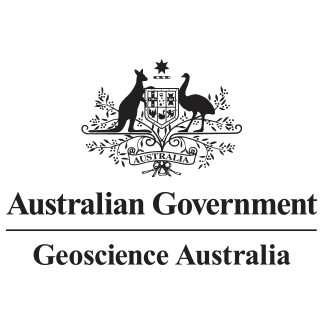Full description
Up to date information about the extent and location of surface water provides all Australians with a common understanding of this valuable and increasingly scarce resource.Digital Earth Australia (DEA) Waterbodies shows the wet surface area of waterbodies as estimated from satellites. It does not show depth, volume, purpose of the waterbody, nor the source of the water.
DEA Waterbodies uses Geoscience Australia’s archive of over 30 years of Landsat satellite imagery to identify where over 300,000 waterbodies are in the Australian landscape and tells us the wet surface area within those waterbodies.
It supports users to understand and manage water across Australia. For example, users can gain insights into the severity and spatial distribution of drought or identify potential water sources for aerial firefighting.
The tool uses a water classification for every available Landsat satellite image and maps the locations of waterbodies across Australia. It provides a timeseries of wet surface area for waterbodies that are present more than 10% of the time and are larger than 2700m2 (3 Landsat pixels).
The tool indicates changes in the wet surface area of waterbodies. This can be used to identify when waterbodies are increasing or decreasing in wet surface area.
More information on using this dataset can be accessed on the DEA Knowledge Hub at https://docs.dea.ga.gov.au/data/product/dea-waterbodies-landsat/?tab=overview. Refer to the research paper Krause et al. 2021 for additional details: https://doi.org/10.3390/rs13081437
The update from version 2 to version 3.0 of the DEA Waterbodies product and service was created through a collaboration between Geoscience Australia, the National Aerial Firefighting Centre, Natural Hazards Research Australia, and FrontierSI to make the product more useful in hazard applications.
Geoscience Australia, the National Aerial Firefighting Centre, Natural Hazards Research Australia, and FrontierSI advise that the information published by this service comprises general statements based on scientific research. The reader is advised and needs to be aware that such information may be incomplete or unable to be used in any specific situation. No reliance or actions must therefore be made on that information without seeking prior expert professional, scientific and technical advice. To the extent permitted by law, FrontierSI, Geoscience Australia, the National Aerial Firefighting Centre and Natural Hazards Research Australia (including its employees and consultants) are excluded from all liability to any person for any consequences, including but not limited to all losses, damages, costs, expenses and any other compensation, arising directly or indirectly from using this publication (in part or in whole) and any information or material contained in it.
Lineage
Maintenance and Update Frequency: asNeeded
Statement:
This is version 3.0 of the DEA Waterbodies polygons.
Version 2 of DEA Waterbodies can be accessed here: https://pid.geoscience.gov.au/dataset/ga/146197
Version 1 can be accessed here: https://pid.geoscience.gov.au/dataset/ga/132814
This product builds upon the DEA Water Observations dataset, details of which are available here: https://cmi.ga.gov.au/data-products/dea/613/dea-water-observations-landsat. The code used in the development of this product is available on GitHub: https://github.com/GeoscienceAustralia/dea-waterbodies and https://github.com/GeoscienceAustralia/dea-conflux
Notes
PurposeInformation about the extent and location of surface water
Issued: 01 02 2024
Data time period: 1986-08-15
text: westlimit=112.00; southlimit=-44.00; eastlimit=154.00; northlimit=-9.00; projection=GDA94 / Australian Albers (EPSG:3577)
Subjects
DEA |
DEA – Digital Earth Australia |
Earth Observation |
Earth and space science informatics |
Landsat |
Published_External |
Surface water hydrology |
analysis ready data |
geoscientificInformation |
inland water |
satellite imagery |
surface reflectance |
water |
User Contributed Tags
Login to tag this record with meaningful keywords to make it easier to discover
Other Information
Link to DEA waterbodies data
DEPRECATED Digital Earth Australia Waterbodies Version 2
local : 146197
DEPRECATED Digital Earth Australia Waterbodies Version 1
local : 132814
Identifiers
- global : 044092ba-b5be-467b-b4dc-23fcd60c4c33
- Local : pid.geoscience.gov.au/dataset/ga/148920
- DOI : 10.26186/148920



